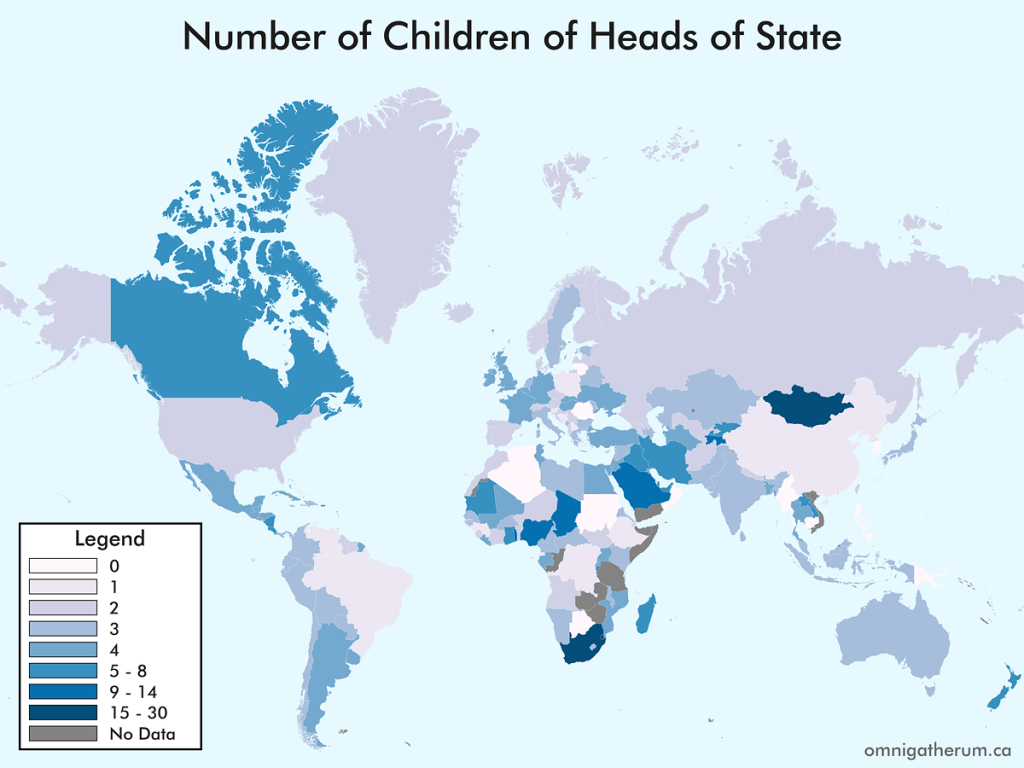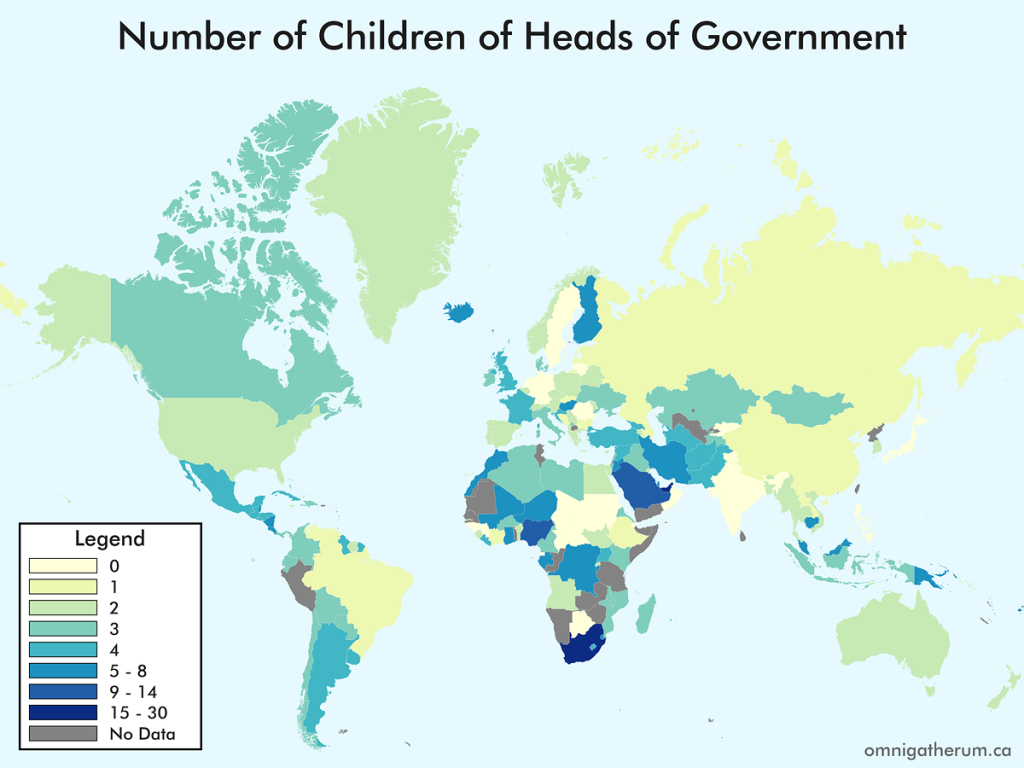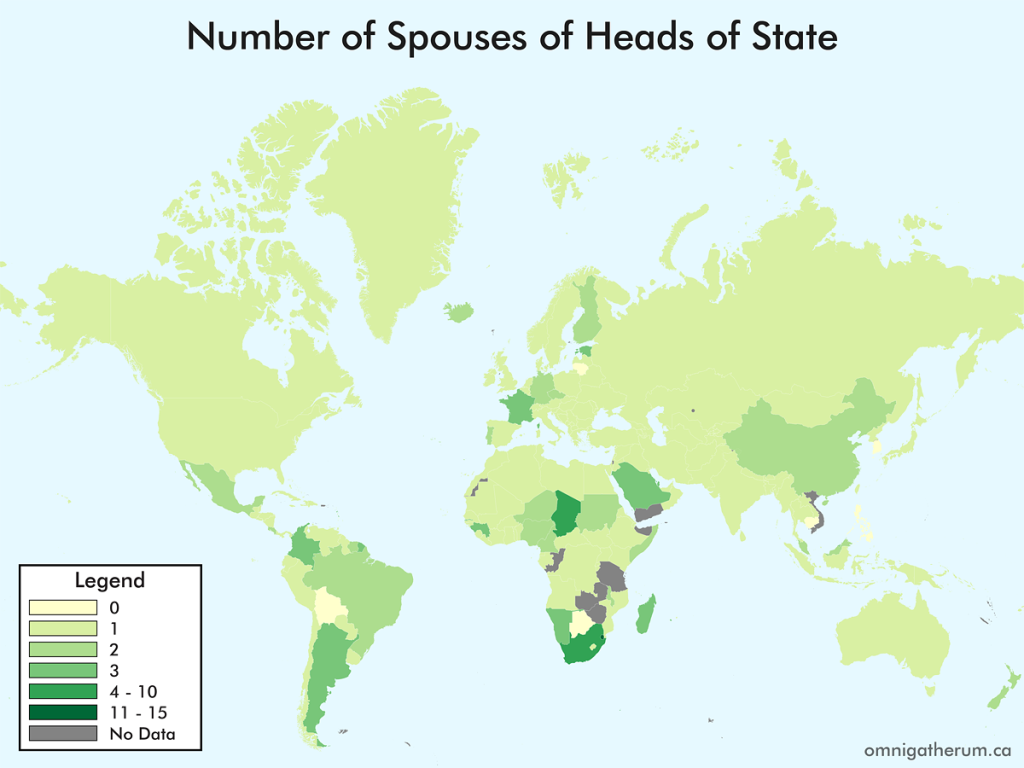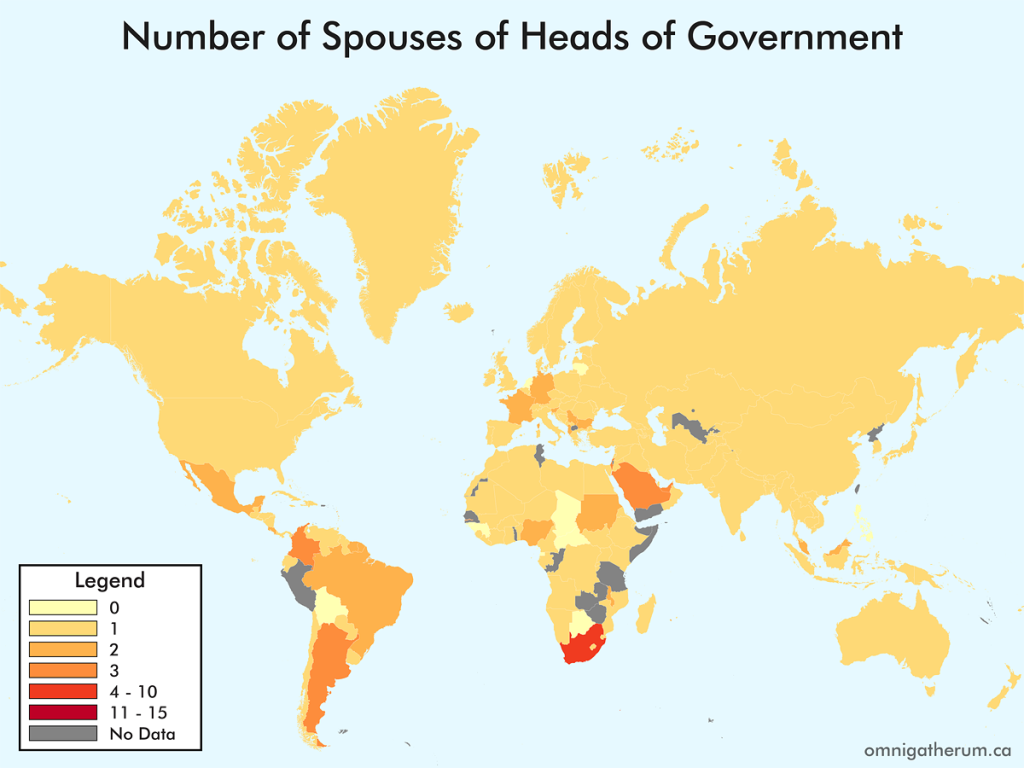One map that I have not seen – and could not seem to find, having looked for it – is a map of the world’s countries by the number of children of the heads of government. Previous (similar) maps that I have come across include educational backgrounds, religious views, and age of leaders. In deciding to make such a map, I broadened the task to that of children and spouses, and for both heads of government and heads of state. Given that world leaders, on the whole, change frequently, I decided to ‘freeze’ the selection of leaders as it was on April 20th, 2016.
For Commonwealth nations, the Governor General was selected as the head of state, instead of Queen Elizabeth II. This was mainly to avoid having Elizabeth II’s spouse and children counts repeated. In general, when multiple choices existed for a head of state or head of government, I selected the person that appeared the fewest times elsewhere. When counting spouses, a person’s domestic partner(s) and spouses were counted together. This combination of counts occurred for about nine leaders. When counting children, adopted children were included in the count.
To gather the data, I started by getting a list of leaders. For this project, the list of current heads of state and government, from Wikipedia, was used. I then extracted the names and Wikipedia URLs of the leaders and matched up their associated countries with the ISO 3166-1 alpha-3 country codes.
Selecting a head of state and head of government was not entirely straightforward. There were several countries whose leadership situations were atypical, for example: Andorra (Joan Enric Vives Sicília, the Episcopal Co-Prince, was chosen since François Hollande is president of France); Bosnia and Herzegovina (the Chairman, Bakir Izetbegović, was chosen for head of state, and Denis Zvizdić was chosen for head of government); China (Xi Jinping was chosen for head of state and Li Keqiang was chosen for head of government); North Korea (Kim Jong-un was chosen for head of state and Pak Pong-ju was chosen for head of government); San Marino (Massimo Andrea Ugolini was chosen for head of state and Gian Nicola Berti was chosen for head of government); Switzerland (the president of the Swiss Federal Council, Johann Schneider-Ammann, was chosen for both positions); Vietnam (Trần Đại Quang was chosen for head of state and Nguyễn Xuân Phúc was chosen for head of government).
I then created a Python script with the Beautiful Soup 4 library to scrape the relevant data from each Wikipedia URL. There were a fair amount of leaders whose (English) Wikipedia pages did not contain the needed information. I referred also to other Wikipedia languages (particularly the ones in the official language(s) of the relevant country), but did not gain much.
The next step in gathering the data was using the (now-deprecated) Freebase API. The process was simpler than dealing with Wikipedia, as Freebase, a graph-structured database, was designed with computer-readability in mind.
The two collections of data – from Wikipedia and Freebase – were combined into a new dataset. The highest value (from either Wikipedia or Freebase) for number of spouses and number of children of each leader was used. I also used crowd-sourcing for a randomly selected subset of leaders to check that the previous two sources were accurate (they were). In addition, I manually searched for data on 45 leaders.
The program used to create the maps was TileMill, a program by MapBox. The process of creating these maps, aside from collecting the data, was fairly straightforward as the only step required to represent the data was to colour each country according to the data (or rather, selected divisions for that data).
The colour palettes for the four maps were created using Color Brewer. A Python script, which read through each of the four relevant columns in the dataset CSV file, was used to create the CartoCSS code for styling the TileMill map (i.e. specifying colours for each country). The script used the ISO 3166-1 alpha-3 country codes that were identified earlier. To assign a particular colour to a country in TileMill, the ISO 3166-1 alpha-3 country code can be used. For example, to colour Greenland red, the appropriate CartoCSS would be:
[ADM0_A3='GRL'] {
polygon-fill: #ff0000;
}
Once that process is complete, the resulting maps are:
Update: Data for Greenland has now been added.



